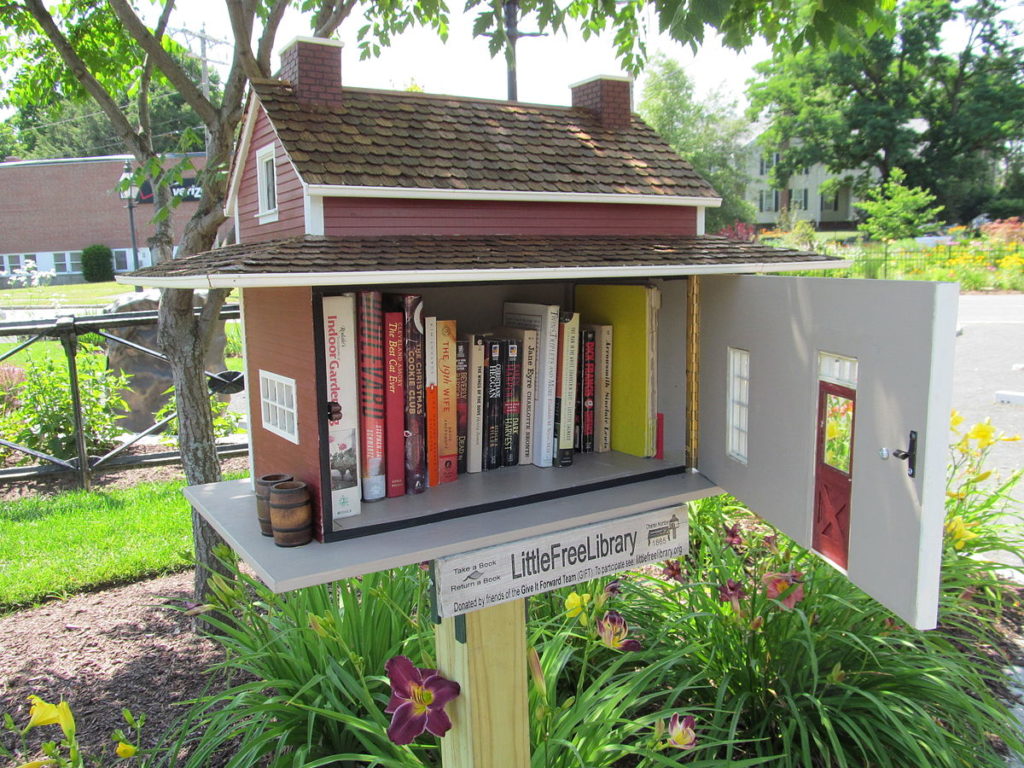Support your bookworm habit while reducing your carbon footprint by being smart about how you get books, and what you do with them when you’re done.
For many people there is no comparison of holding a good book in your hand versus reading from an e-book. This typically leads to shelves collecting with books. And, for those with children, it may include stacks of books they have outgrown.
Indeed, for avid readers, an e-book might be a slightly more sustainable option. It’s true that e-readers can contain potentially toxic chemicals, they require electricity to use, and they’re difficult to recycle — though Kindles can be sent to Amazon, on the company’s dime, for material reclamation. But, if you read a lot, your chance of reducing your carbon footprint through digital reading increases. According to one study, you have to read just over 100 books on an e-reader in order for it to be better for the planet than producing roughly the same amount of printed books.
So how can those with a preference for a hard copy book reduce their environmental impact? We look at five ways you can minimize your literary carbon footprint.
1. Borrow books and e-books from the library
The beauty of libraries is that the books inside them get read again and again. If you’re someone who enjoys physically turning the page while reading, borrow books from your library so that all that paper doesn’t go to waste when you’re done. And, since buying e-books online can be expensive, consider borrowing e-books from your library too. These days, many libraries offer services like Overdrive, where their patrons can “borrow” books to read on their own devices.
2. Swap your finished books
If you’re the type of person who reads books just once, consider passing finished books on to another person through a local or online book swap organization. For many swapping websites, you have to pay to ship the books, but you can receive them for free.
3. Frequent used bookstores in your community
Used bookstores are another great alternative to shopping online and extends the life and value of the book itself. Going to a used bookstore supports small, independent businesses, which is important for maintaining community vibrancy and stimulating your local economy.
If you don’t have a used bookstore near you, consider buying from an online used bookstore. Some of the used book vendors, which purchase book discards from schools and libraries among other sources, are even able to give back to those organizations.
-
-

Source: littlefreelibrary
-
4. Participate in Little Free Libraries
Whether you’ve got an armload of books to liberate, or you need something new to read, a quick walk around your neighborhood might solve your problem. Little Free Libraries, birdhouse-sized bookshelves, have popped up across the country. The idea is to take a book or leave a book, promoting literacy, reusing resources, and building community. Check out the worldwide map to see if you have one near your home, school, or office.
5. Find creative places to donate used books
Whether you have children’s books your kids have outgrown, or books that you’ll never read again, it’s not hard to find a place to donate them, rather than recycling them. Check local Goodwill branches, libraries, and even prisons to see if they accept book donations. Donate children’s books to a family shelter, a publicly funded preschool, or a children’s hospital. Send books to a collection point for an organization like Books for Africa, which provides books to communities in developing nations. Donate cookbooks to a domestic violence shelter, a refugee organization, or any other organization dedicated to helping people reclaim the chance to live independently.
Subscribe to receive more zero waste tips.





